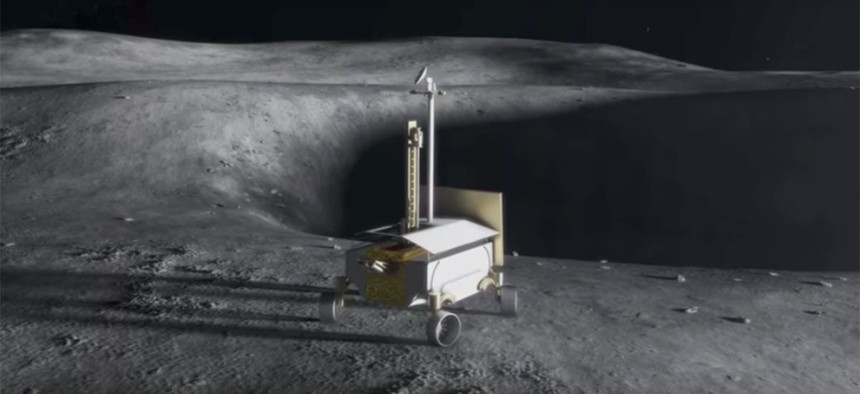NASA Robot Trains for the Dark Side of the Moon

A computer simulation of the planned lunar rover. NASA
Learning to see in the darkened environment will take work.
NASA took to Facebook Live on Wednesday to show off the agency's new Resource Prospector moon rover and to discuss future lunar missions.
This rover, currently in development at NASA's Ames Research Center in California, will be looking for water, exploring the moons polar regions and scouting locations for future landing sites and missions.
There's still a lot of prep work to be done to get the rover in shape for its future mission. Scientists at Ames have created a scale model of the lunar surface to test sensors and software to teach the rover how to see in the darkened environment of the moon's poles.
There are long shadows due to the angled light from the sun and researchers need to make sure the rover can differentiate between a shadow and a crater. If the rover were to guess wrong, it could get damaged or stuck and hurt the mission.
"No robotic mission has ever explored the poles of the moon and we don't know very much about these unique lighting conditions and how they might affect robots navigating and exploring the unknown terrain," said Uland Wong, a computer scientist at Ames.
While the Resource Prospector won't actually be on the moon until sometime in the 2020s, once there the Rover's stereo-imaging cameras that act as its eyes will gather data to take back to its developers to utilize for future missions with difficult terrain.
To learn more, check out the video below from CNET:






